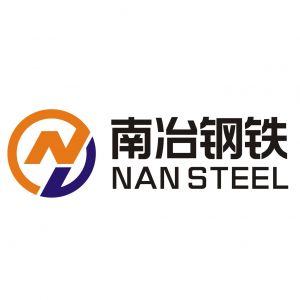Precautions for steel pipe storagePosted by chase Liu on June 5th, 2023 Seamless pipes have a hollow section and are widely used as pipes for conveying fluids, such as octg casing, natural gas, gas, water and certain solid materials. The welded pipe is a steel pipe made of steel plate or strip steel after being crimped and welded, generally with a length of 6 meters. The production process of welded steel pipe is simple, the production efficiency is high, there are many varieties and specifications, and the investment in equipment is small, but the general strength is lower than that of seamless steel pipe. The production of seamless or welded pipes may not necessarily be put into use immediately. This requires the factory to have a good storage environment. The precautions for steel pipe storage are as follows Material Warehouse Requirements 1. Keep the material warehouse clean and well-drained, away from harmful gases or dust. Weeds and all debris should be removed on the site to keep the steel clean 2. Do not stack together with acid, alkali, salt, cement and other materials that are corrosive to steel in the warehouse. Different types of steel should be stacked separately to prevent confusion and prevent contact corrosion 3. Large-scale steel, rails, steel plates, large-diameter steel pipes, forgings, etc. can be stacked in the open air 4. Small and medium-sized steel bars, wire rods, steel bars, medium-caliber steel pipes, steel wires, and wire ropes can be stored in well-ventilated sheds, but must be covered with thatch 5. Some small steel products, thin steel plates, steel strips, silicon steel sheets, small-diameter or thin-walled steel pipes, various cold-rolled and cold-drawn steel products, and high-priced and easily-corroded metal products must be placed in the warehouse 6. Pay attention to ventilation in sunny days, pay attention to closing and preventing moisture in rainy days, and always maintain a suitable storage environment Reasonable stacking, advanced first put 1. The principle of stacking is to stack according to the variety and specification under the condition of stable stacking and ensuring safety. Different types of materials should be stacked separately to prevent confusion and mutual corrosion 2. It is forbidden to store items that are corrosive to steel near the stack 3. The bottom of the pile should be high, firm and flat to prevent the material from being damp or deformed 4. The same material is stacked separately according to the order of storage, which is convenient for the implementation of the principle of advanced first delivery 5. For the section steel stacked in the open air, there must be wooden pads or stone strips underneath, and the stack surface is slightly inclined to facilitate drainage, and attention should be paid to placing the material straight to prevent bending deformation 6. The stacking height shall not exceed 1.2m for manual operation, 1.5m for mechanical operation, and the stack width shall not exceed 2.5m. 7. There should be a certain channel between the stacks. The inspection channel is generally 0.5m, and the access channel depends on the size of the material and the transport machinery, generally 1.5-2.0m 8. The bottom of the stack is raised. If the warehouse is on a sunny concrete floor, it can be raised by 0.1m; if it is a mud floor, it must be raised by 0.2 to 0.5m. If it is an open-air site, the cement floor shall be raised 0.3-0.5m, and the sand and mud surface shall be raised 0.5-0.7m. 9. Angle steel and channel steel should be stacked in the open air, that is, the mouth should face down, and the I-beam should be placed vertically. Keep the warehouse clean and strengthen material conservation 1. Before the materials are put into storage, care should be taken to prevent rain or impurities. For materials that have been exposed to rain or stains, use different methods to clean them according to their properties. For example, if the hardness is high, you can use a wire brush, and if the hardness is low, use cloth, cotton, etc. 2. After the materials are put into storage, they should be checked frequently. If there is rust, the rust layer should be removed 3. After cleaning the surface of general steel, it is not necessary to apply oil, but for high-quality steel, alloy thin steel plate, thin-walled pipe, alloy steel pipe, etc., after derusting, the inner and outer surfaces need to be coated with anti-rust oil before storage 4. For steel with serious corrosion, it should not be stored for a long time after derusting, and should be used as soon as possible. Like it? Share it!More by this author |


